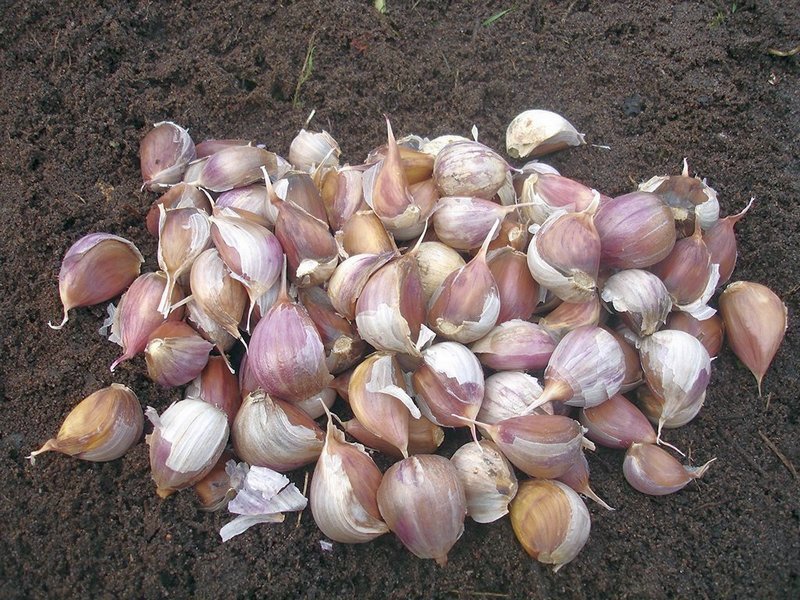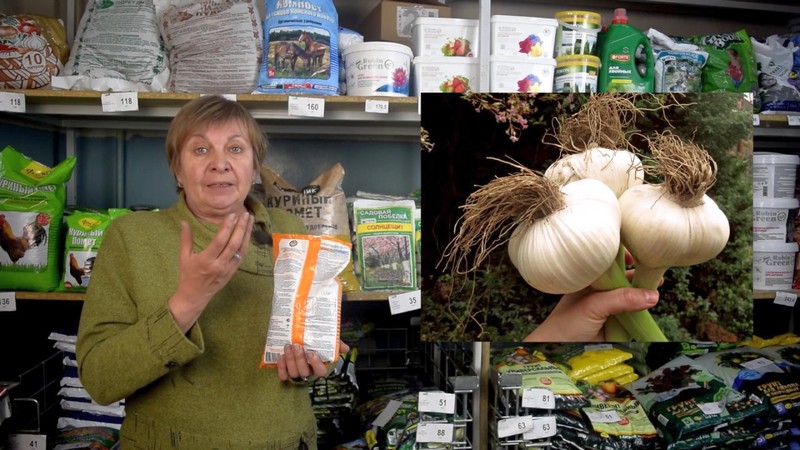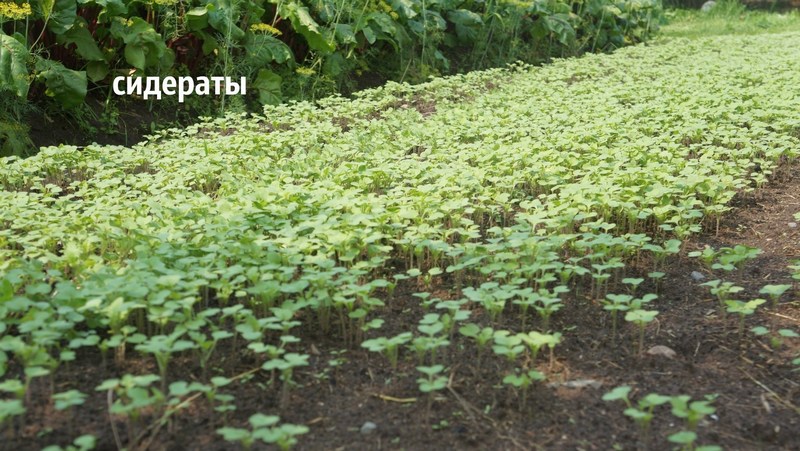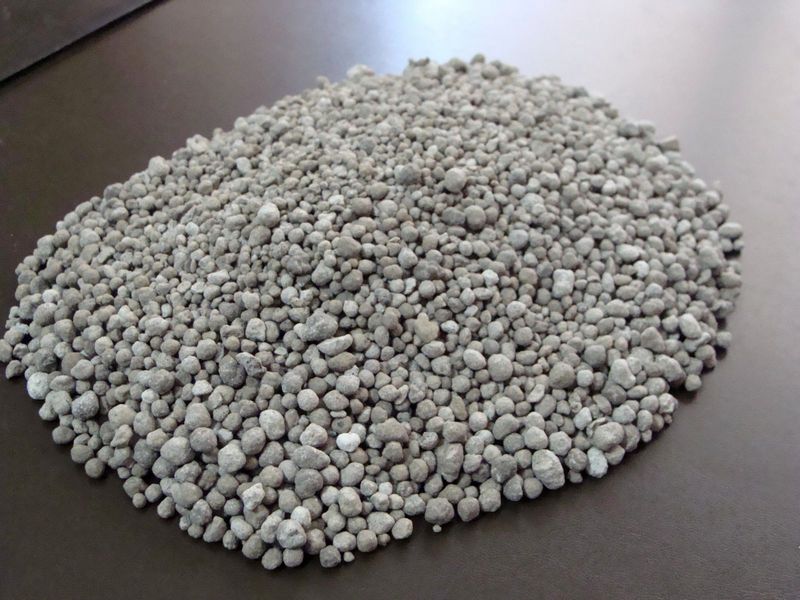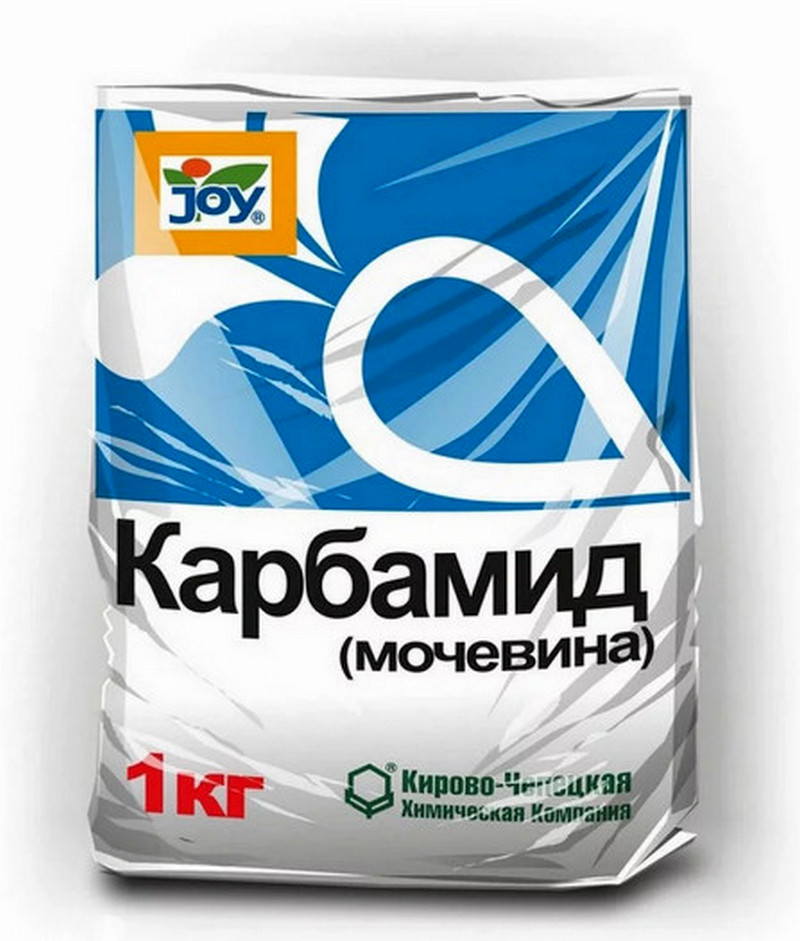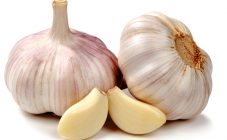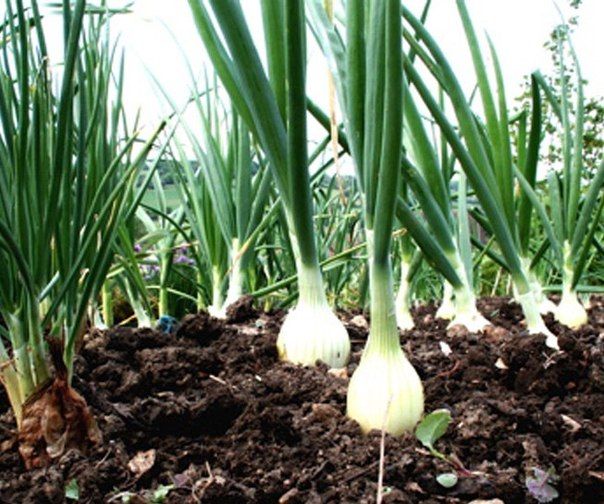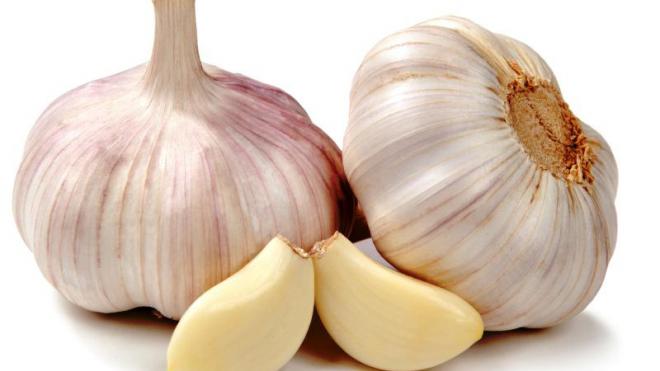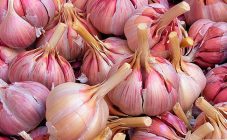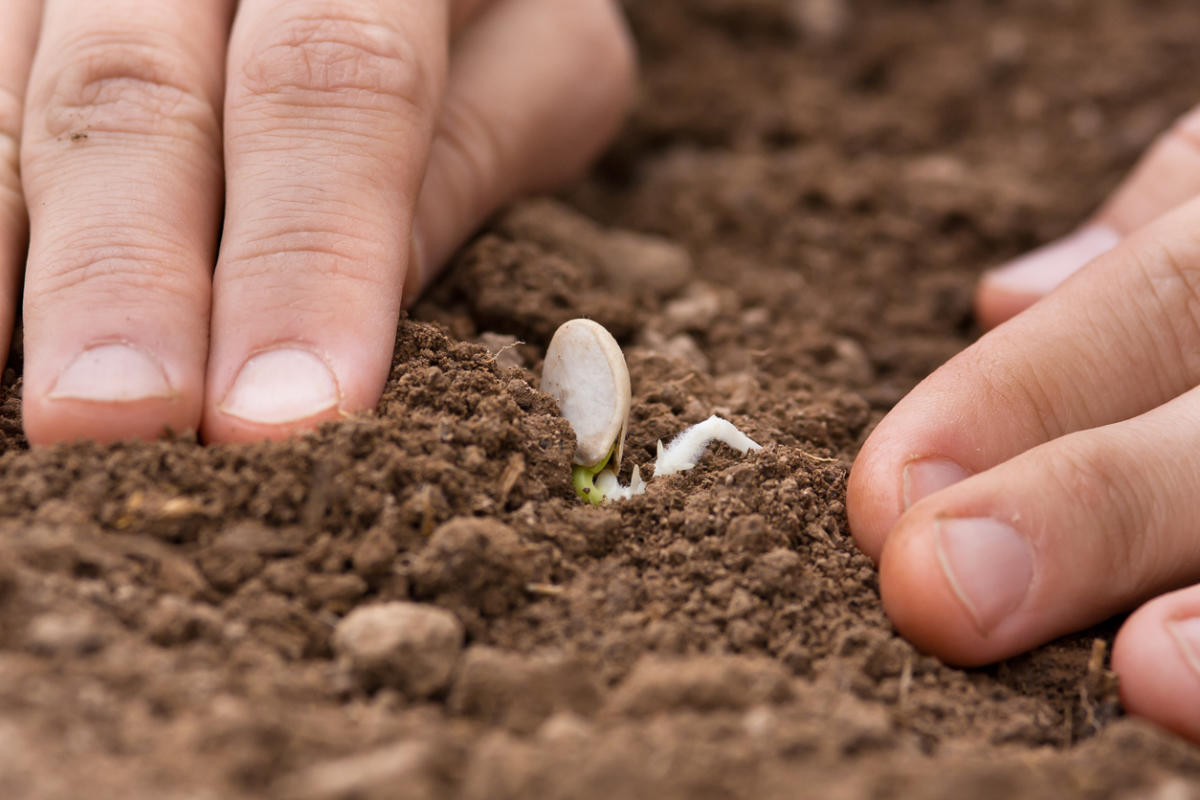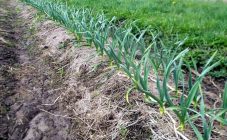Content:
Garlic is not a very demanding culture. It grows well in different climates and is not sensitive to soil quality, light or shade. But if you are serious about the future harvest, you need to pay due attention to the care and fertilization of garlic.
In order to lower the acidity, you need to fertilize the soil with calcium. For this purpose, you can use ground limestone (up to 500 g per square meter). Limestone can be mixed with manure, evenly distributed over the bed, and dug up. It is enough to carry out this procedure once for several years.
Top dressing of garlic in spring
For proper development and good growth, garlic must be fertilized. This can be done by observing some rules.
Fertilizing winter garlic
This is a necessary action to strengthen and nourish the vegetable after the winter period. Held three times per season. The first time feeding is introduced a couple of days after the snow melts and subject to stable warming. The process is repeated a second time after 2-3 weeks. The third feeding is done at the beginning of June, during the formation of the head.
Fertilizing spring garlic
Spring variety care has some differences. Timely feeding saturates the garlic with useful substances, gives an impetus to the rapid germination of pagons. For the first time, fertilizers are applied a few days before the planting of the cloves in the freshly dug soil. The second feeding is carried out when several feathers appear. The last fertilization is done in mid-June.
There are several ways to feed garlic. Gardeners use natural and special chemical fertilizers.
The use of chemicals requires caution and some knowledge - improper use can harm humans and plants. Ready mixes are made up of potassium, phosphorus and nitrogen in certain proportions. The product is applied in dry form - into moistened soil and diluted water.
Another option for using chemical fertilizers is possible. At the first stage, urea is used, at the next - nitrophoska, at the third - superphosphate.
The easiest and most effective way to fertilize garlic with organic means is to add ash and settled manure or chicken droppings to the soil (be sure to dilute with water 1: 7 to avoid damage to the plant). Use such a solution carefully, avoid getting it on the leaves.
Planting green manure plants is another option to strengthen the garlic. In this case, these are legumes and cereals. They are able to accumulate useful substances and neutralize the increased acidity of the soil.
Ammonium for feeding
Often, when a problem arises: garlic turns yellow than watering and feeding ammonia can be a real salvation.Oddly enough, but this tool is very affordable, it is sure to be found in every first-aid kit, it acts as a good nourishment for onions and garlic. The whole secret lies in the significant nitrogen content in ammonia. Thanks to nitrogen, plants can produce chlorophyll, as a result, a green mass develops - stems, leaves. Vegetables grow better with more life-giving substances. Despite the fact that nitrogen is contained in the air, plants cannot assimilate it - they absorb the substance from the soil.
Ammonium for garlic is a good alternative to nitrogen-containing fertilizers - they contribute to the accumulation of nitrates in vegetables.In addition, there are several more positive factors when using ammonia for garlic and onions:
- Plants are not able to accumulate nitrogen, there is no danger of overdose;
- The economy of this method of fertilization - ammonia costs a little, one bubble is enough for a large area;
- Feeding garlic with ammonia is not as harmful to humans and the environment as synthetic fertilizers;
- Salmon has a good effect on the composition of the soil, lowers its acidity;
- The drug can be used both when yellow leaves are detected, and as a prophylaxis against diseases.
Basic rules for feeding garlic with ammonia
Fertilization of plants with ammonia is carried out in several stages:
- Use ammonia for garlic in the spring when the garden is being prepared. The dug, moistened soil is watered with a solution of ammonia (50 ml) and cold water (10 l);
- The next feeding is carried out when several leaves appear. To prepare a solution, 2 tablespoons of ammonia are added to 10 liters of cold water;
- In the future, feeding can be carried out as a prophylaxis 2-3 times a month, but with a remedy with a lower concentration (1 spoonful of ammonia and 10 liters of water).
There are circumstances when garlic needs emergency help: yellowing appears on the tips of the feathers for no apparent reason, yield indicators fall. In such cases, the vegetable is immediately processed with a solution of ammonia (60 ml of ammonia per 10 liters of water).
Due to its pungent specific smell, ammonia repels pests that threaten the future harvest: aphids, onion and carrot flies, weevils, wireworms. To combat insects, a solution of ammonia (25 ml of ammonia per 10 liters of water) with the addition of soap will be effective. With its help, the product adheres well to the green garlic mass.
Correct order of solution preparation:
- Grate the soap and pour in a little hot water;
- Dissolve the cooled soap solution in cold water;
- Add ammonia to the mixture.
Safety rules when working with ammonia
If ammonia is used carelessly, serious consequences are possible: burns, poisoning. This must be remembered and not neglected precautions:
- The solution is added to the water, not the other way around;
- Fertilization work is carried out in calm weather using gloves and a gauze bandage;
- If ammonia gets on the skin or eyes, rinse them immediately and consult a doctor;
- It is better for hypertensive patients to avoid working with ammonia - sudden pressure surges are possible.
Fertilizing garlic with ammonium nitrate
A good alternative to ammonia is a special agent - ammonium nitrate. Its composition, rich in nitrogen and sulfur, allows you to restore yellow leaves, strengthen plants.
Nitrogen contributes to the greening of the feathery part of garlic, thanks to sulfur, it is well absorbed.
The presence of trace elements calcium and mania in the composition of garlic nitrate strengthens the fiber and the root system well.
The use of ammonium nitrate has many positive factors:
- Optimal composition for universal fertilization;
- Fast impact and long lasting effect;
- Ease of use;
- Good performance at low temperatures.
Despite all the good sides, the use of ammonium nitrate has its drawbacks:
- The structure and composition of the soil changes - the amount of salts increases, an increase in acidity is possible;
- The nitrogen content is lower than, say, urea, and it may not be enough for the full development of a vegetable.
Basic principles of fertilization
The first feeding of garlic with ammonium nitrate is carried out in the spring (spring variety) or in the fall (winter variety) in order to prevent future stems from turning yellow.
30 g of saltpeter is diluted in 10 liters of water, the soil is irrigated. In the fall, the garden should be watered before the first frost, in the spring - after the snow melts, before planting. In the case of applying organic fertilizers, the rate of nitrate is halved.
It is recommended to carry out 3-4 feeding per season. Can be combined with urea. Watering should be carried out with a dissolved chemical in the evening, after moistening the soil.
Excessive use of ammonium nitrate should be avoided - all the strength of the plant will go into the green mass, the heads themselves may remain small.
Complex fertilizers
To facilitate the process of growing onions and garlic, complex fertilizers are produced - these are special means, which contain important substances in optimal proportions.
The most famous dressings:
- Cinderella - a complex based on wood ash with the addition of humic acid, various herbs: nettle, calendula, lemon balm. This fertilizer has a good effect on the growth and development of onions, helps to get rid of insects: ticks, nematodes, onion thrips, flies. It manifests itself well in resisting powdery mildew, regulates soil acidity. One package of "Cinderella" is enough for planting 20-25 kg of cloves. Fertilizer is added to loosened soil up to 10 cm deep;
- Fasco - special dressing for garlic and onions. It is packaged in the form of granules. The main function of this complex is plant nutrition and yield increase. Due to its unique composition, it is a source of strength and health of the future harvest. This complex includes almost all the necessary micro- and macroelements (calcium, sodium, magnesium, potassium, iron, zinc). Studies have shown that using a Fusco remedy called Onion and Garlic can increase yields by 70%. Fertilizer is applied to the soil during the digging of the beds in the quantities indicated on the package.
Fertilizing and feeding garden crops is an indispensable part of the process of growing your favorite plants. But in the race for high yields, one must not forget about caution and a sense of proportion. Be sure to follow the instructions so as not to harm plants, soil and your health.
